The Division of Germany I - Late 2030’s
As it stands today, the Northern Lights Incident in 2035 would be the first major step towards war in Europe. The contamination worldwide forced many to abandon their homes and lands. Both Eastern and Central Europe became hotbeds for Collapse radiation pollution as well as civil unrest. One of the hardest-hit nations in Central Europe was Germany. Millions of natives and foreign refugees had been evacuated to the southern states due to the contamination in the northern and eastern states. Everything north of the Thuringian Mountains was irradiated to some degree, leaving many dead or as fleeing refugees. As time passed, and more refugees continued to flood into South Germany, the South German natives gradually turned against the intake of survivors, resulting in anti-government protests breaking out. Fortunately, tensions were able to be mediated by the Bundestag (German Federal Parliament) before they could turn into rioting, but the discontent remains among the natives.

Logo of the German Bundestag.
Due to the loss of arable land in multiple EU states, the countries could no longer support the needs of their people, and as a result, were forced to take radical actions. By 2040, the prospect of re-colonizing Africa for resources had been openly considered and was underway in some states. Germany at the time was active in the reconstruction and decontamination of some of the northern zones, but to the Bundestag, it was not enough. The topic of recolonization was a point of contentious debate between parties during the 2037 Elections. Groups such as the Social Democratic Party of Germany (SDP) and more left-wing parties actively campaigned against the neo-colonial policies of the government. However, many citizens within Southern Germany had grown in support of expansionism. Among the German refugees, the majority were against colonialism, instead preferring the government to continue their decontamination efforts in the north. After the EU passed a vote of no confidence, the anti-colonial parties suffered defeat. From 2038 to 2043, Germany would join its West and Central European allies in colonizing Africa. By 2041, Italy had taken full control of Libya, and the anti-colonial parties within Europe were being suppressed.
While decontamination of the North had continued, the shift in focus to Africa drew funding away from the program. In these decontaminated zones, the standard of living was drastically lower than in the south. Living space was limited to an average of ten square meters, and dependable heating systems were few in number. In the event anyone left their living spaces, they were required to wear protective equipment due to the radiation in the Yellow Zones. Additionally, both ELID and radiation alarms were implemented to inform the populace of impending storms and or ELIDs in the area. Such harsh living conditions in the reconstructed zones were unacceptable to the refugees wanting to return to their homes. However, as observed in Girls’ Frontline, the cities of Berlin and Bremen have been reclaimed as Green Zones by the 2060s.
As years passed, conflicts between the natives and refugees continued, and the government repeatedly ignored the requests of those wanting to return to their homes. Germany had become a breeding ground of hatred and division; however, the tensions would not turn hot for some time to come.
The Division of Germany II - September-November 2044
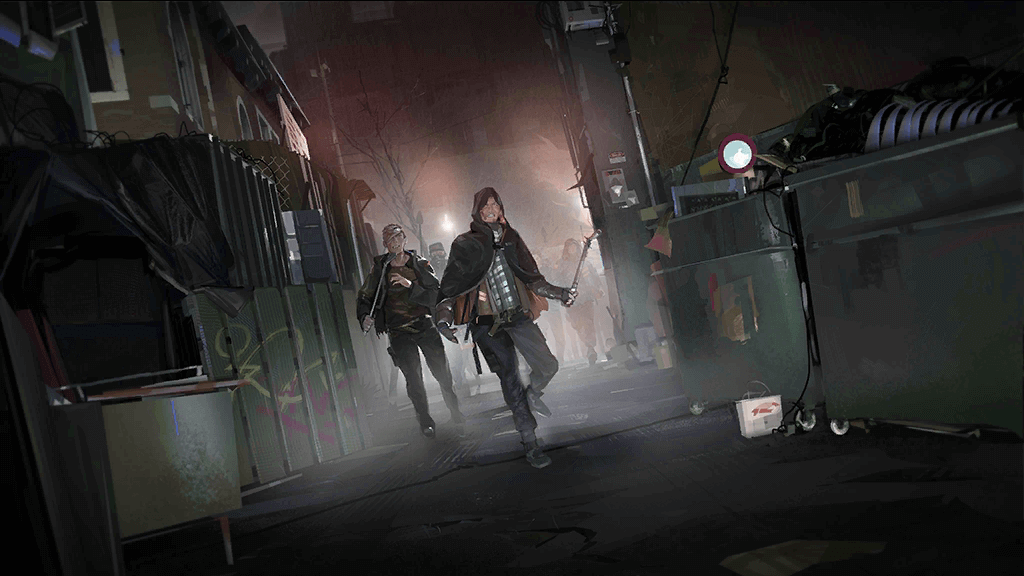
By 2044, Europe was on the edge of war, but nothing yet had sparked it. That spark would manifest in the form of the German Civil War near the end of that year. Ironically, what started as a usual yearly budget meeting in parliament would ultimately result in a thermonuclear war the following year. In September 2044, the Bundestag met in Frankfurt to discuss the yearly budget for the following year. The budget plan ignored many of the East Germans’ requests for decontamination and reconstruction, and instead, allocated much of the budget towards the development of Germany’s overseas developments. Days later, the vote passed by a small margin, angering many of the former East Germans and pro-reconstruction parties. However, the passing of the plan was their last straw after a long series of failures and grievances.
Soon after the passing of the vote for the budget plan, the Social Democratic parties were outraged. Feeling abandoned by their government, the parties united to request the dissolution of parliament and a new election afterward. The Social Democratic parties received their wish when the vote to dissolve received just enough votes to pass. Both the Christian Democratic Union of Germany (CDU) and the Liberal Democrats realized the severity of the situation, and the Bundestag would soon be dissolved. Based on the belief that a minor insurrection was underway, the West German parties proposed enacting the National Emergency Act to temporarily suspend part of the German Constitution that granted self-governance rights to the East German regional government. In the event of the legislation being enacted, the semi-autonomous governments of North and East Germany would be rebuilt by selected groups of the central government.
Throughout the rest of the month, the Bundestag was faced with a multitude of disagreements and debates over possible dissolution and invoking of the National Emergency Act. The final vote to enact the Act occurred in early November, passing with a razor-thin margin. With the vote passed, the 1983 Constitution was suspended, and members of North and East German parties were proclaimed to be national security threats. The Social Democrat party and its members had effectively been declared as terrorists.

The new parliament of the Federal Republic of Germany was formed overnight. The pro-expansionist factions within the government had taken control and began to purge themselves of the Social Democrats and their leaders on the same day. Viewing the Social Democrats as threats to the state, the Federal Police (Bundespolizei, BPOL) and the Federal Office for the Protection of the Constitution (Bundesamt für Verfassungsschutz, BfV) were given orders to arrest prominent Social Democrats and their leaders across the nation.
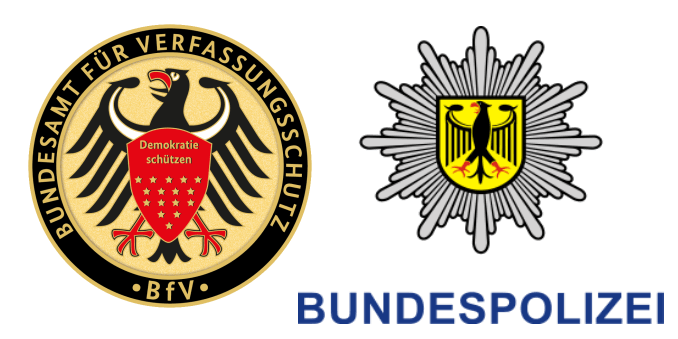
Logos of the Bundesamt für Verfassungsschutz and Bundespolizei.
During the purge, the SDP branch in Western Germany was hit the hardest. Unsurprisingly, mass protests sprung up throughout Germany against the actions being taken, especially in Berlin. The protests hampered the progress of the federal agencies, leading to the Bundestag issuing an order on November 11th for a nationwide curfew. As Germany seemed to be collapsing from within, the protests quickly turned to riots. By the 13th, bloody engagements between protestors and the police with hundreds of casualties were occurring in Berlin, Hamburg, Frankfurt, Munich, and Nuremberg. With the breakout of violence across Germany, civil war was looming between the West and East.
The 2044 German Civil War - November-December 2044
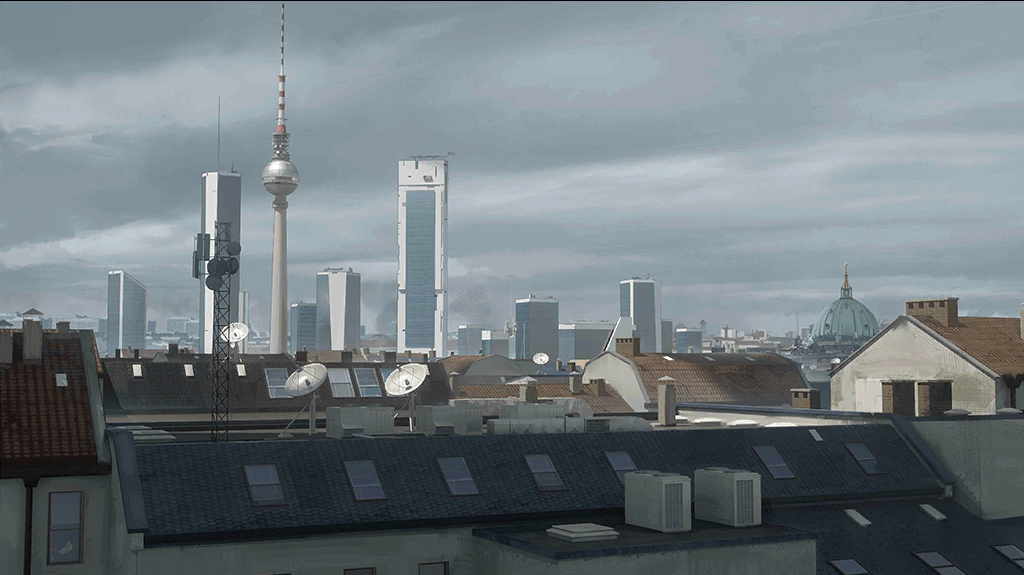
Berlin in late 2064.
As protests and riots spread across every region of Germany, the Frankfurt government issued an order to the Berlin police to conduct a purge of the East German People’s Council. The Council was held within the Palace of the Republic in Berlin, serving as the headquarters of the protests. When the purge began later that day, the military police were confronted with heavy resistance from protestors, resulting in a deadly skirmish. The brawl resulted in the deaths of almost a hundred with hundreds more injured. The outcome of the battle was broadcast nationwide, leading to an eruption of anger and resentment in the East towards the Frankfurt government. After the federal government had killed dozens of their citizens, the Palace of the Republic Murders, as they’re known today, weres the final nail in the coffin. The East saw this as the final straw, realizing there was no peaceful or political solution to remedy the situation. In days, Social Democrats and East Germans were preparing for war.

The first significant revolt took place on November 18th, in which the East German Bundespolizei (BPOL, Federal Police) refused to carry out orders, causing instability in several major cities. During the following day, several garrisoned Bundeswehr (Armed Forces of the GFR) units in the North and East turned against Frankfurt. These detachments would be among the first to turn against the federal government as well as the first to directly engage West German-loyal troops. On the 20th, the rebel troops launched a series of assaults against loyal Bundespolizei and Spezialeinsatzkommandos (SEK, Special Operations Command) garrisons within East Germany.
Clashes between loyal and rebel troops continued throughout the week, resulting in the total removal of loyalist forces in the East. By the 23rd, Frankfurt was panicking, unable to perform any governing actions to control the state of affairs. On the same day, the SDP held a press conference in front of the Brandenburg Gate to celebrate their victory over the loyal troops and officially announce their independence. Once more Germany was divided between the German Federal Republic and the German Democratic Republic.

Logo of the Bundeswehr.
On the following day, the EU HQ in Brussels contacted the GFR government, ordering them to quickly and effectively quell the unrest in their country. Per the EU’s orders, the Bundestag deployed the Bundeswehr on the 26th of November into East Germany to put down the rebellion. Loyal and rebel troops engaged in a series of battles throughout the next 48 hours from the border to Berlin, but the loyalists had not been stopped. As the Bundeswehr marched into Brandenburg, it seemed victory was at hand, and the rebellion would soon be over. However, unbeknownst to them, it was far from.
The rebel troops had them exactly where they needed to be. By allowing the loyalists to march into Brandenburg, the rebels were able to surround the enemy’s armored and mechanized brigades. From November 30th to December 2nd, the loyalist Bundeswehr brigades were cut off and were being attacked from all sides. After realizing they could not hold any longer, the loyalists surrendered to the rebels on the 2nd, causing tremendous shock to Frankfurt. Their notions of the revolution being put down in days had been shattered. With the GDR’s successful defense of Berlin, it was clear to all sides of the conflict that Germany had entered a civil war.
The Spark of World War III - December 2044
When the East German uprising began in mid November, the Social Democrats in Berlin were preparing a contingency plan to ensure their victory in the coming weeks. On the second day of the uprising, SDP leaders requested foreign intervention from the NUSSR through their Berlin Embassy. Hoping to ensure victory in the conflict, they wanted the Soviets to intervene in the matter by deploying troops in Berlin. Following the review of the legal viability of the intervention, the Soviets viewed it as legally justifiable due to the blatant violation by the Frankfurt government of the 1983 US-USSR agreement. After the East Germans’ victory in Berlin, the Soviets realized the will to persevere in the East was strong. Lastly, the war would give the NUSSR an excuse to enter into the EU’s sphere of influence and a chance to deliver some payback to Brussels for their involvement in the Ukrainian Civil War.
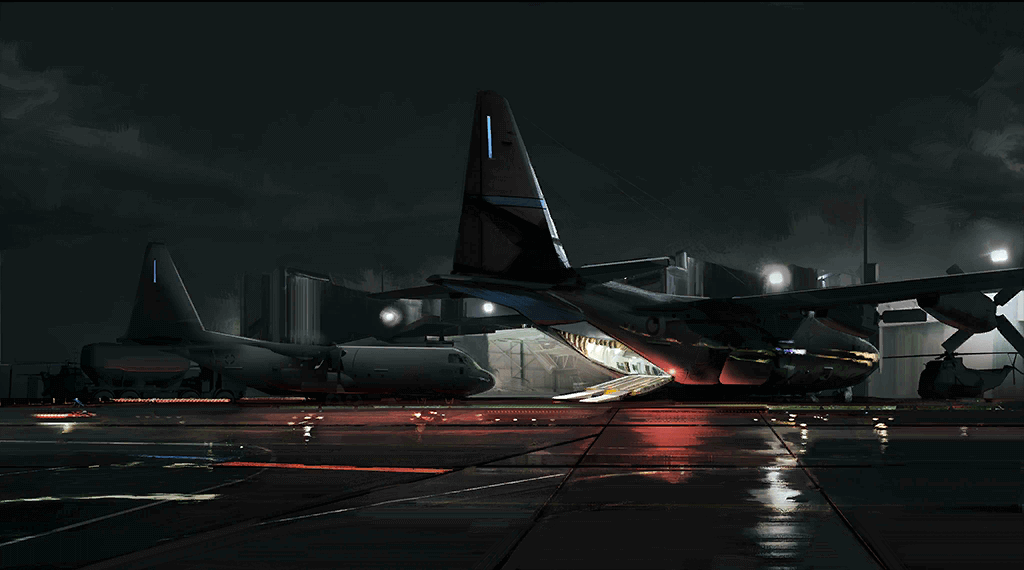
By late November, the Soviet Baltic Fleet drafted plans to land in the port city of Rostock in Northern Germany. Furthermore, the plans called for large numbers of paratroopers to be dropped into Berlin. From there, Soviet Airborne Forces (VDV) would bypass the NATO surveillance stations in Poland, and land at Schönefeld Airport on the 1st of December. When December 1st came, the plan was carried out without a hitch. After landing, the airborne forces began moving tanks and heavy weapons into East German hands. By the 7th, the Soviets were fully entrenched in Berlin with barricades built on the Straße des 17. Juni (17th of June Street). On the same day, the recently deployed EU rapid-response teams entered Berlin from the west.
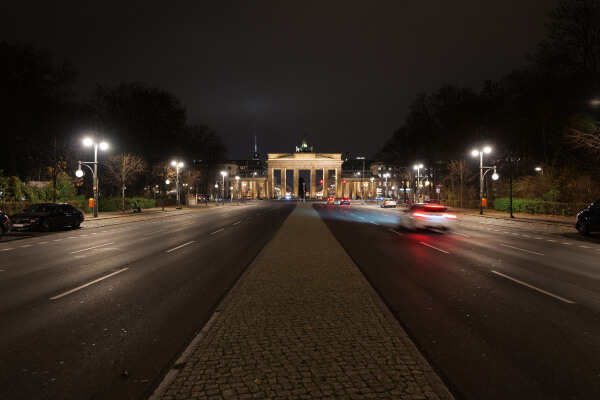
Photo of the Straße des 17. Juni at night taken in 2021.
After the defeat of the Bundeswehr in the Brandenburg region, the Bundestag was startled by the developments as they had failed to carry out the EU’s orders. On December 5th, Frankfurt requested EU rapid-response teams be sent into Berlin to put an end to the crisis. The EU agreed with the Bundestag’s request, and began preparing the response teams for an immediate intervention. On December 7th, the EU forces arrived in Berlin and were shocked by what they had found. The response teams were faced with Soviet troops on the Straße des 17. Juni. The meeting of troops would come as a tremendous shock to both Brussels and Frankfurt. For the first time since the Cold War, soldiers from the West and East were on the streets of Berlin, awaiting another global conflict. Though, this time, the worst would come to pass.
The Soviet intervention drastically changed the scope of the conflict. It was no longer simply a civil war, but now a power struggle between East and West. The exact details of the events directly preceding WWIII are murky, but presumably Brussels was not able to put an end to the instability without force due to the Soviet presence. Initially, the United States avoided any involvement in the German conflict for some time, but eventually entered the fray in Berlin sometime before WWIII. Because of the presence of Soviet personnel in East Germany, settling the conflict with violence was likely looked down upon due to the chances of starting a global war. The involvement of the EU, the Americans, and the Soviets in such a precarious conflict obviously led to very delicate circumstances. One wrong move on part of any of the powers and the war would begin. Unfortunately for humanity, the clock struck midnight on March 2nd, 2045, vindicating Rossartre’s predictions.














